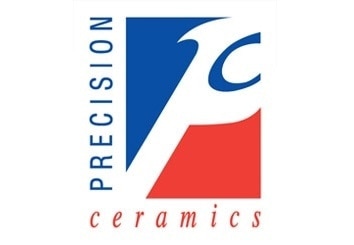Thermocouples (Figure 1) are the most widely used temperature measuring devices. They are more user-friendly, cost-effective, and durable temperature sensors. They provide results very quickly and have several benefits over other devices used in temperature measurement.
They contain two dissimilar conductors contacting each other at one or more points. They work on the principle of the Peltier-Seebeck effect. A voltage is produced when there is a difference in the temperature of one of the spots from the reference temperature at other areas of the circuit. Besides measuring and controlling temperature, a thermocouple is capable of converting a temperature gradient into electricity.

Figure 1. Thermocouples are the most widely used temperature measuring devices.
Selection of Appropriate Thermocouples
A wide choice of thermocouples are available to address the requirements of every possible industrial application, including Micro, Standard and Mini Plug Thermocouples, Washer Style, Transition and Bayonet Thermocouples. Many different aspects need to be considered in the selection of an appropriate thermocouple for a specific application. Some of the factors include chemical resistance, temperature range, vibration and abrasion resistance, and installation requirements.
Different alloys are employed to measure different temperature ranges. Properties such as corrosion resistance are also a selection factor. Standardization of thermocouples is typically done against a reference temperature of 0°C. Electronic methods of cold-junction compensation are normally used by practical instruments to adjust for changing temperature at the instrument terminals. The varying characteristics can also be compensated for by electronic instruments in order to optimize the accuracy and precision of measurements.
Precision Ceramics’ Materials in Thermocouples
Ceramic tubes and insulators offered by Precision Ceramics are commonly used in combination with thermocouples across a myriad of industries to facilitate monitoring the performance and consistency of production processes, particularly in adverse and aggressive chemical environments at elevated temperatures of up to1700°C.
Commercial thermocouples are interchangeable, economical, and supplied with standard connectors. Unlike most other temperature measurement devices, external form of excitation is not required for thermocouples because they are self-powered. They are capable of measuring a broad range of temperatures. Nevertheless, accuracy is the major drawback and it's hard to achieve system errors below 1°C.
An electric potential is generated at any junction of dissimilar metals with respect to temperature. Thermocouples for practical temperature measurement are junctions of specific alloys exhibiting predictable and repeatable relationship between voltage and temperature. When the distance between the measuring device and the measurement point is large, extension wires may be used for intermediate connection. These wires are relatively inexpensive when compared to the thermocouple making materials.
Knowing the significance for industrial applications, Precision Ceramics has produced a host of high-tech ceramic tubes and insulators from two specific types of material. One material is Dimulit, which is a compound of silicon oxide and aluminum oxide. This low-cost material is suitable for applications involving high temperatures of up to1500°C. Rubalit is another material, which is almost pure aluminum oxide. This material exhibits very high chemical resistance and temperature stability at temperatures of up to1700°C. It also has superior electrical resistivity and mechanical strength.
Applications of Precision Ceramics’ Tubes and Insulators
Precision Ceramics tubes and insulators are typically used in the following applications:
- Lead through tubes
- Electrical insulators
- Vacuum furnace components
- Kiln furniture
- Temperature measurement
- Heating element supports
- Furnace work tubes

This information has been sourced, reviewed and adapted from materials provided by Precision Ceramics.
For more information on this source, please visit Precision Ceramics.